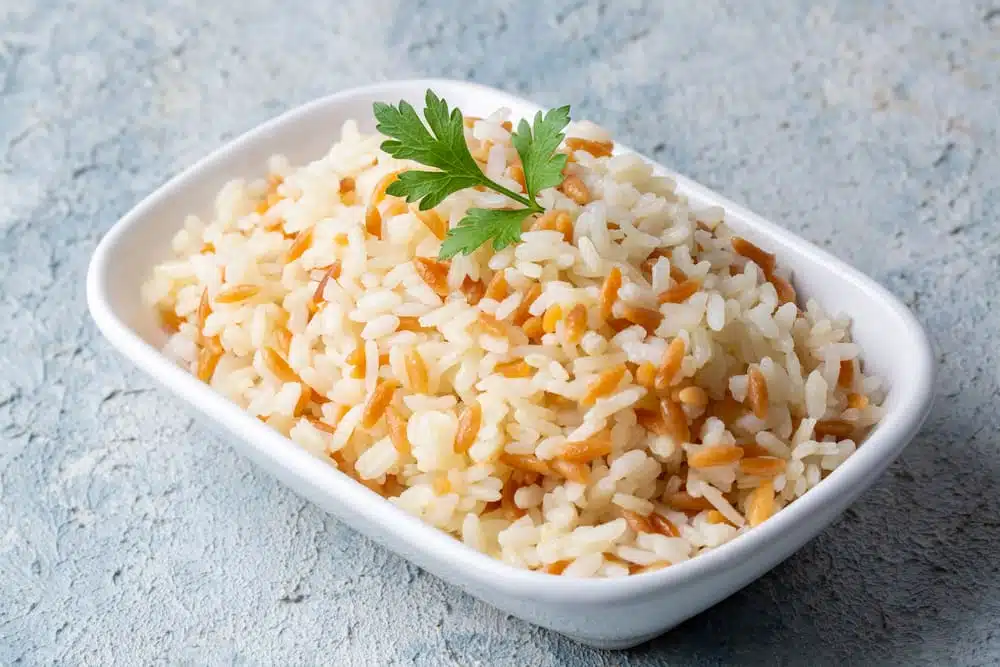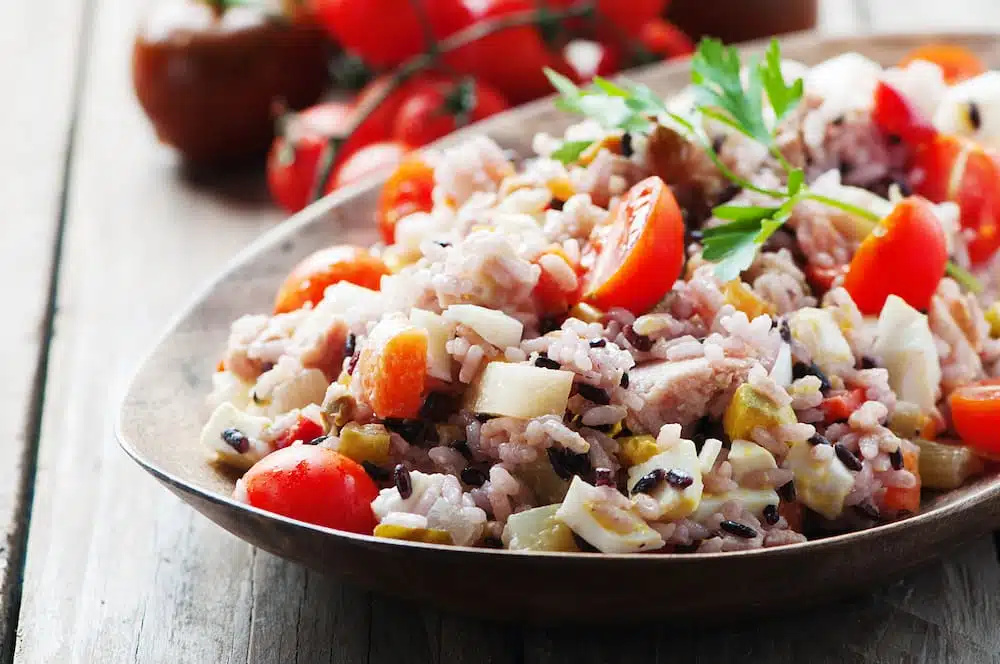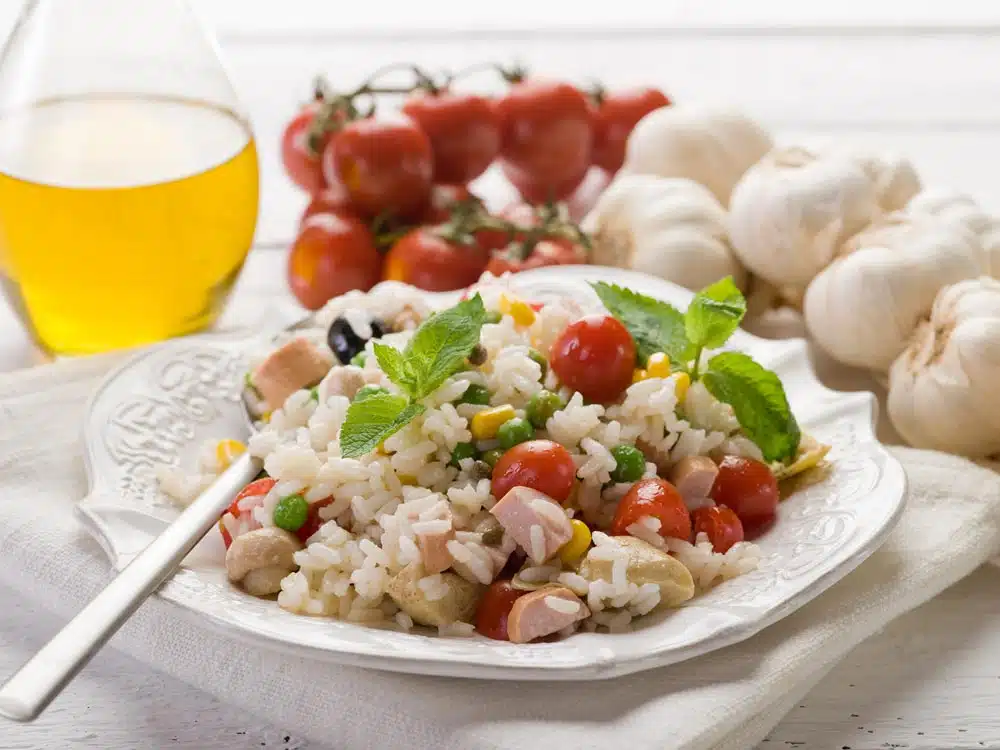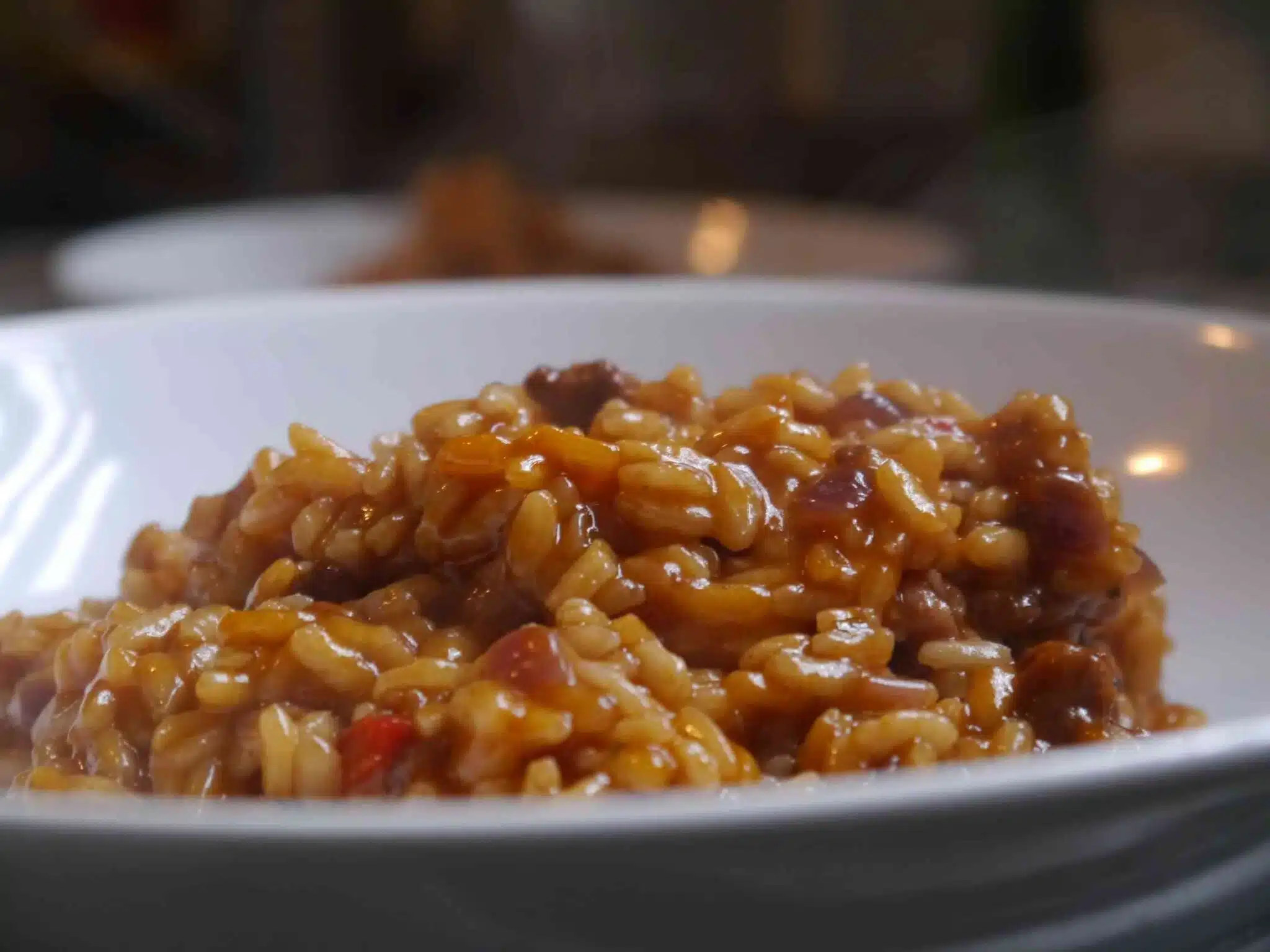Welcome to Paulina Cocina! This time, we're going to talk more about a way to make rice than a recipe. We're talking about pilaf rice , a cooking method that gives rice a loose texture and incredible flavor.
In this article, we'll tell you what pilaf rice is , why it's called that, which variety is best for preparing it, how to avoid the most common mistakes, and, of course, the step-by-step pilaf rice recipe . So take note (or take a photo) and get ready to try this way of cooking rice.
Content table
About pilaf rice
Pilaf rice is basically a way of cooking white rice, which has been used for centuries in different parts of the world. The key to this method is browning the grains in butter or oil before cooking them with hot broth or water.
This process seals the starch and prevents the grains from sticking together like wet cement. You can also add seasonings, vegetables, or nuts to give it more flavor and texture.
The result? A rice dish that's not just a side dish, but a dish in itself. Perfect for showing off with little effort.
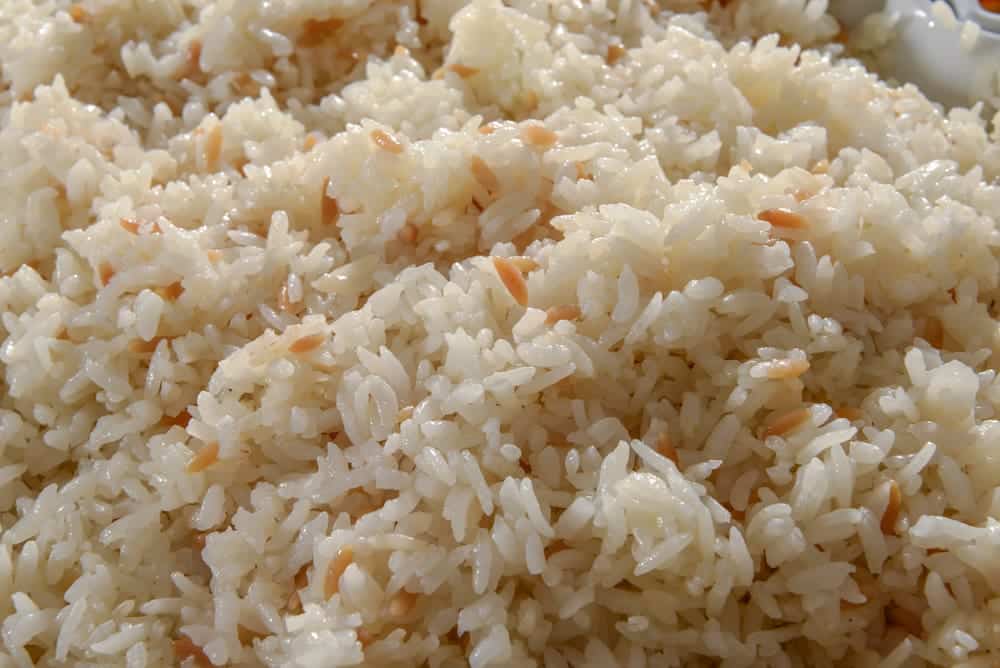
History and origin of pilaf rice
The name sounds elegant, but the history of rice pilaf is rather humble. It's believed to have originated in the Middle East , although it's also found in India, Turkey, Central Asia , and even in Mediterranean cuisine.
In fact, the word "pilaf" comes from the Persian "pilāv," which means "rice cooked in broth." Each culture has added its own twist, but the base is always the same: rice browned in butter and cooked with a hot liquid, usually broth.
Over time, the recipe traveled the world and is now a classic in many kitchens. In Argentina, although it's not as popular as rice with butter and cheese or the foolproof risotto , it's a technique worth incorporating .
6 reasons to prepare the pilaf rice recipe
If you're still not convinced, here are six reasons why you should make this rice today:
- Loose and perfect : The era of sticky rice is over.
- It's easy to do: No stirring or guessing when to turn off the heat.
- It is versatile: It goes well with baked meat , with a fish stew , with baked vegetables , or on its own with a good seasoning, be it cardamom, cumin or curry.
- It can be made with what you have at home: It doesn't require any unusual ingredients.
- It tastes better than boiled rice: Because it absorbs all the flavors of the broth and butter.
- It's impossible to mess up . With this technique, the rice always turns out well .
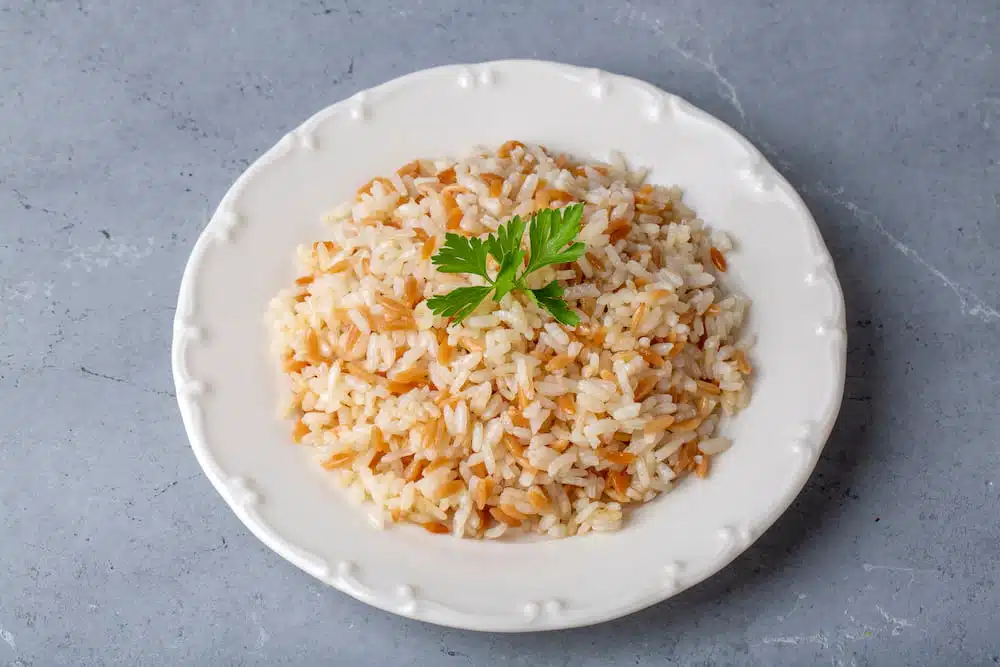
Pilaf rice vs. other ways of cooking rice
The big difference is in the cooking process. While regular white rice is boiled in water and then drained (or cooked like a risotto with constant stirring), white pilaf rice is sealed before the liquid is added.
That initial browning is what prevents the rice from becoming overcooked , mushy, or bland. Plus, it controls the absorption of liquid, leaving each grain loose and flavorful .
The best variety of rice for making pilaf rice
For white pilaf rice, it's best to use long-grain varieties like Basmati or Jasmine . These types of rice have less starch than carnaroli (the kind used in risotto), which helps give them a looser, more textured finish.
If you don't have basmati rice on hand, you can also make it with regular long-grain rice , but you need to wash it well before cooking to remove excess starch.
The importance of broth in the white pilaf rice recipe
The broth gives flavor and depth to this rice dish, so it is recommended to use a homemade vegetable or chicken or, failing that, a good stock cube dissolved in hot water.
If you don't have broth, you can make it with water and a couple of spices , but the result will be more neutral. In that case, it's a good idea to add onion, garlic, or herbs to compensate for the lack of flavor.
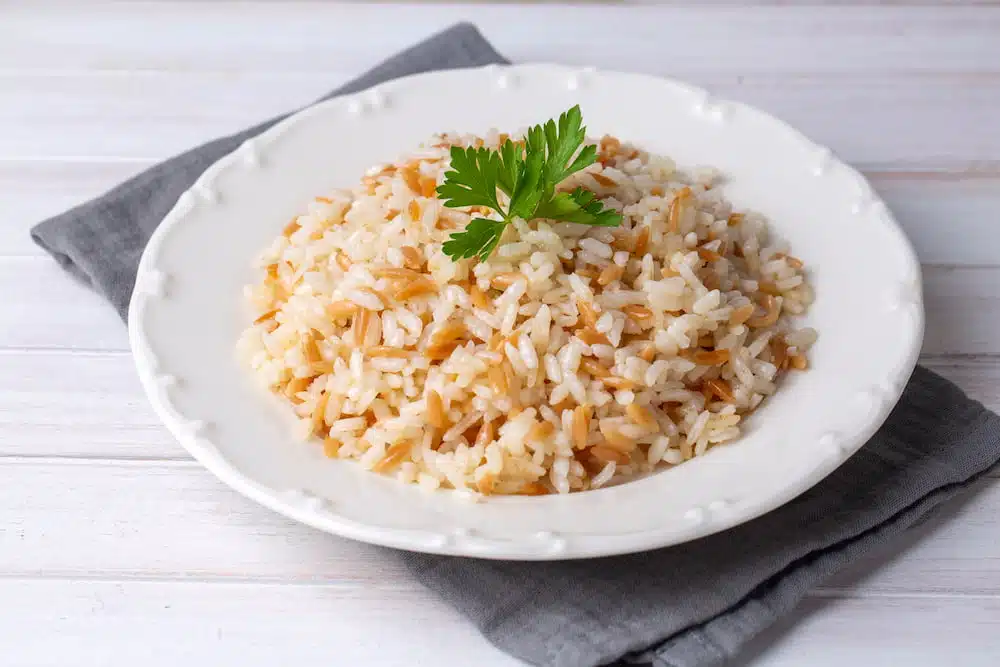
Mistakes to avoid when making pilaf rice
- Don't brown the rice: Without this step, the magic of pilaf rice is lost.
- Using too much liquid : The ideal ratio is 1 cup of rice to 2 cups of broth.
- it tightly: Steaming is key to perfect white pilaf rice.
- Stirring while cooking : No! Leave it alone.
- Uncover ahead of time : Wait at least 10 minutes before fluffing with a fork.
8 Tips and Secrets for Spectacular Pilaf Rice
- Use butter instead of oil: For a more intense rice flavor.
- Toast the rice: With patience until it looks golden.
- Add garlic: A whole clove of garlic in the broth or pre-sauté adds an extra touch of flavor.
- Patience: Cook it over low heat without stirring.
- Rest: Let the rice pilaf rest covered for 10 minutes after turning off the heat.
- Fluff it up : Use a fork to loosen the grains without breaking them.
- Added flavor: A few nuts or raisins add a gourmet touch to pilaf rice.
- Reheat carefully: In a pan with a little butter.
Follow on Instagram ( here )
and on YouTube that I upload new recipes every week ( click here )
Pilaf Rice Recipe
Yields: 4 portions.
Preparation time: 35 minutes.
Ingredients
- 1 cup of basmati or fine long grain rice
- 2 cups of vegetable or chicken broth
- 1 CDA of butter
- 1 tbsp olive oil
- ½ chopped onion
- 1 chopped garlic clove
- Salt and pepper to taste
- Optional: Chopped parsley, nuts, raisins
How to make pilaf rice step by step
- In a frying pan or saucepan, melt the butter with the oil (this is to prevent the butter from burning).
- Add the chopped onion and garlic, and cook over medium heat until translucent.
- Add the rice and toast it for a few minutes until it turns golden.
- Add the hot broth, salt and pepper.
- Cover, reduce heat, and cook for 12 to 15 minutes without uncovering.
- Turn off the heat and let it rest covered for 10 more minutes.
- Fluff with a fork and serve with chopped parsley and nuts on top, or as a garnish for other dishes.
